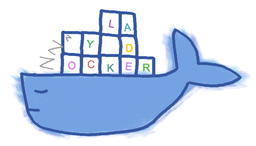
| 官方网站 | https://github.com/jesseduffield/lazydocker |
|---|---|
| GIT地址 | https://github.com/jesseduffield/lazydocker |
| GIT Star数 | 44771 |
| 开发语言 | Go |
| GIT信息最后更新日期 | 2025/06/17 16:35 |
| 许可 | MIT |
| 简介 | 一个用Go语言和gocui库编写的支持Docker和docker-compose的简单终端UI。 |
Normally lazydocker formula can be found in the Homebrew core but we suggest you to tap our formula to get frequently updated one. It works with Linux, too.
Tap:
brew install jesseduffield/lazydocker/lazydocker
Core:
brew install lazydocker
You can install lazydocker using scoop:
scoop install lazydocker
You can install lazydocker using Chocolatey:
choco install lazydocker
You can install asdf-lazydocker plugin using asdf-vm:
asdf plugin add lazydocker https://github.com/comdotlinux/asdf-lazydocker.git
asdf list all lazydocker
asdf install lazydocker latest
asdf global lazydocker latest
You can manually download a binary release from the release page.
Automated install/update, don't forget to always verify what you're piping into bash:
curl https://raw.githubusercontent.com/jesseduffield/lazydocker/master/scripts/install_update_linux.sh | bash
The script installs downloaded binary to $HOME/.local/bin directory by default, but it can be changed by setting DIR environment variable.
Required Go Version >= 1.19
go install github.com/jesseduffield/lazydocker@latest
Required Go version >= 1.8, <= 1.17
go get github.com/jesseduffield/lazydocker
You can install lazydocker using the AUR by running:
yay -S lazydocker
Docker Pulls Docker Stars Docker Automated
If you have a ARM 32 bit v6 architecture
docker build -t lazyteam/lazydocker \
--build-arg BASE_IMAGE_BUILDER=arm32v6/golang \
--build-arg GOARCH=arm \
--build-arg GOARM=6 \
https://github.com/jesseduffield/lazydocker.git
If you have a ARM 32 bit v7 architecture
docker build -t lazyteam/lazydocker \
--build-arg BASE_IMAGE_BUILDER=arm32v7/golang \
--build-arg GOARCH=arm \
--build-arg GOARM=7 \
https://github.com/jesseduffield/lazydocker.git
If you have a ARM 64 bit v8 architecture
docker build -t lazyteam/lazydocker \
--build-arg BASE_IMAGE_BUILDER=arm64v8/golang \
--build-arg GOARCH=arm64 \
https://github.com/jesseduffield/lazydocker.git
Run the container
docker run --rm -it -v \
/var/run/docker.sock:/var/run/docker.sock \
-v /yourpath:/.config/jesseduffield/lazydocker \
lazyteam/lazydocker
Don't forget to change /yourpath to an actual path you created to store lazydocker's config
You can also use this docker-compose.yml
You might want to create an alias, for example:
echo "alias lzd='docker run --rm -it -v /var/run/docker.sock:/var/run/docker.sock -v /yourpath/config:/.config/jesseduffield/lazydocker lazyteam/lazydocker'" >> ~/.zshrc
For development, you can build the image using:
git clone https://github.com/jesseduffield/lazydocker.git
cd lazydocker
docker build -t lazyteam/lazydocker \
--build-arg BUILD_DATE=`date -u +"%Y-%m-%dT%H:%M:%SZ"` \
--build-arg VCS_REF=`git rev-parse --short HEAD` \
--build-arg VERSION=`git describe --abbrev=0 --tag` \
.
If you encounter a compatibility issue with Docker bundled binary, try rebuilding
the image with the build argument --build-arg DOCKER_VERSION="v$(docker -v | cut -d" " -f3 | rev | cut -c 2- | rev)"
so that the bundled docker binary matches your host docker binary version.
Call lazydocker in your terminal. I personally use this a lot so I've made an alias for it like so:
echo "alias lzd='lazydocker'" >> ~/.zshrc
(you can substitute .zshrc for whatever rc file you're using)
everything is one keypress away (or one click away! Mouse support FTW):